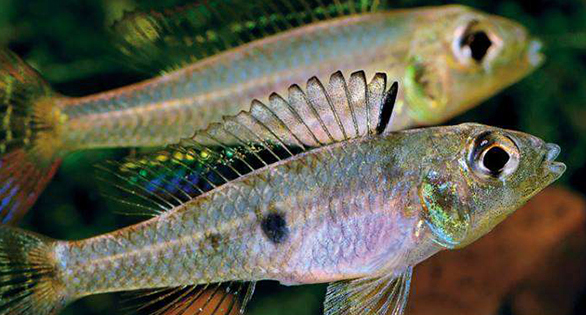Aaahh, I'm in a similar boat! My tapwater has a GH of 253ppm... great for livebearers, not so much all the other excited species most of us want to keep!
Right now I have one tank that I keep for softer water, has my otocinclus and pygmy cories in, and I use a mix of my tapwater and rainwater to bring to to an acceptable range for them. But my LFS also delivers RO water should I need it.
For dithers, I'm really drawn to rasbora kubotai.
On the other hand, I've also been checking out the different Pseudomugil species, or threadfin rainbows, since it would be easier to manage the water hardness and less hassle!
I'm so jealous of the people in softwater areas!
I have soft water in my country....LOL
Even my Discus managed to breed...
Anyway, just to share something though I'm not an expert in breeding of Apistogrammas.
I will be starting an Apistogrammas tank soon with my 25 gallons tank or I may switch to my 30 gallons tank if require.
Your 15.5 gallon tank is suitable for a pair of Apistogramma.
If you are planning to breed them, don't keep them with Tetras fish.
They are like Piranhas as they will eat the fry.
Even Cardinal and Neon Tetras are fry eaters.
Usually the recommended tank mates are like Pencil fish and Threadfin rainbows as they have very small mouth.
As for Rasbora Kubotai, most of them are wild caught.
If they are wild caught, you will need to deworm and get ready some parasite medications on hand as most wild caught fish will have internal worms/parasites and even external parasites(eg. gill fluke).
I have my Wormer plus (Flubendazole) ready now as I might purchase some Wild Cardinal Tetras.
Let me know if you need info about this medication.
Also, take note that the female Apistogramma can become very aggressive after breeding as it need to protect its fry.
I heard of cases where the female will even beat up the male for some species of Apistogramma.
Apistogramma Cacatuoides is the most common and easily available and the easiest to breed..
The most peaceful Apistogramma is the Borelli which I am considering of getting them.
You can find out more from the Apistogramma fish forum though I can't post the link here.
They have an Apistogramma expert there, whose name is Mike Wise.
Lastly, I leave some links, videos for more information about Apistogrammas and other fish here which you can consider for your future tanks.
Currently, I'm seriously considering the following interesting fish:
1)Apistogramma Borelli
2)Biotoecus Opercularis
3)Dicrossus-filamentosus (more difficult to find)
Actually, why don't you consider the shell dweller since you have hard water for your 15 gallons tank?
For your bigger tanks, you can consider some Lake Tanganyikan fish that are less aggressive and not too large.
Let me know if you need some recommendations.
A very good website about Apistogrammas:
The unusual and interesting Dwarf Cichlid, Biotoecus opercularis "Rio Uaicurapá" is being featured by Wisconsin-based fish importer Freshwater Exotics.

www.amazonasmagazine.com

www.seriouslyfish.com


